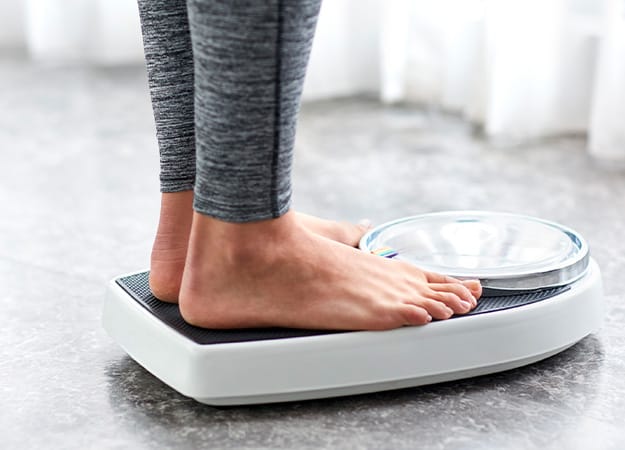While the injectable trio Ozempic, Mounjaro, and Wegovy have been all over the headlines and highly sought after for their impressive effects in assisting weight loss, Eli Lilly continues to work on a new weight loss injectable that may lead to significant improvements in weight management: Retatrutide.
The unreleased weight loss drug using triple-agonist peptides is demonstrated to help overweight people or people with obesity lose up to 25% of their body weight.
Learn more about Eli Lilly’s newest weight loss intervention, Retatrutide, and its fundamental mechanism in shedding extra pounds.

Brand-new Eli Lilly Weight Loss Drug Retatrutide Will Be More Effective With Triple Agonist Activity
What Is Retatrutide?
Retatrutide is a new weight loss drug being experimented on by Eli Lilly, a pharmaceutical giant renowned for its breakthrough in diabetes and obesity treatment.
Much like other weight loss drugs rolled out by Eli Lilly, Retatrutide is administered under the skin (subcutaneous route) per week and has yielded exceptional results in treating chronic diseases like diabetes and obesity compared to the predecessors.
About the Study: How Retatrutide Works
Before diving into the action mechanism of Retatrutide, it is important to note that the power we have learned about the injectable is only at the trial phase. It has just completed a phase 2 trial and will soon enter the phase 3 trial to confirm its efficacy further. Until then, Eli Lilly’s new weight loss drug still has a long way to go before the official launch to the public.
Much like the core active components of well-known weight loss drugs, Retatrutide belongs to the glucagon-like peptide-1 (GLP-1) receptor agonist class drug. However, Retatrutide is superior in that it also targets glucagon receptor (GCGR) and gastric inhibitory polypeptide receptor (GIPR) in addition to encouraging insulin exertion with GLP-1 receptors. This means that in contrast to Wegovy, a GLP-1 agonist mimics just one hormone. Mounjaro, a dual agonist, mimics both GLP-1 and a GIP; Retatrutide is labeled as a tritagonist drug due to its content of three hormone receptors. The experimental drug by Eli Lilly is demonstrated to mimic the action of three hormones that are found active in increasing the feeling of fullness, regulating blood sugar, and suppressing appetite, respectively: GLP-1, GIP, and glucagon.

What have we known so far about the effectiveness of Retatrutide after the phase 2 trial?
In the study that was conducted on 338 adults with a body-mass index (BMI) of 30 or higher, or obese in this case, the participants were randomly injected with a placebo or once-weekly one of four Retatrutide doses in the subcutaneous ratio of 2:1:1:1:1:2:2 (1 mg, 4 mg [initial dose, 2 mg], 4 mg [initial dose, 4 mg], 8 mg [initial dose, 2 mg], 8 mg [initial dose, 4 mg], or 12 mg [initial dose, 2 mg]). By half of the treatment, individuals administered 12 mg of Retatrutide had lost 17.5% of their body weights (or the equivalent of 41 pounds). After 48 weeks of treatments, the percentage of shedded weight increased up to 24.2% or 57.8 pounds, while those taking the lowest dose (1 mg) lost about 9%.
In another study, Retatrutide was tested in 281 adults with type 2 diabetes and a body-mass index between 25 and 50, ranging in age from 18 to 75. Researchers discovered that the higher the dose, the more significant the body weight reduction. In other words, people taking higher doses of Retatrutide experienced more weight loss and vice versa. At the end of the 36-week study, adults with the lowest dose of 0.5 mg per week had lost around 3%, whereas participants receiving the highest dose of 12 mg showed body weight reduction as coming to approximately 17% of their body weight. In addition to robust weight loss, it was also discovered that the participants also experienced surprising decreases in blood sugar levels, “bad” cholesterol, and blood pressure.

Retatrutide vs. Other Weight Loss Drugs
Retatrutide was developed based on the mechanism of action utilized for Novo Nordisk’s Wegovy and Ozempic and Eli Lilly’s Mounjaro. These drugs support weight loss by mimicking certain hormones, such as glucagon-like peptide-1 (GLP-1), found in the gut, triggering insulin exertion and diminishing the appetite once injected weekly. The component of Mounjaro is a bit different as it is loaded with another hormone that activates insulin release, glucose-dependent insulinotropic polypeptide (GIP), improving blood sugar and enhancing weight reduction.
When it comes to Retatrutide, the novel medication acts by targeting glucagon receptors, leading to superior weight loss. Specifically, the glucagon signals the liver to exert stored sugar, soon to be broken down by the body.
Despite the ongoing research, preliminary data from the phase 2 trial indicate that Retatrutide may surpass other weight-loss drugs introduced by Eli Lilly when treating obesity and related conditions.
According to the study mentioned, it is evident that Retatrutide is expected to precede its predecessors by facilitating people with obesity and other overweight-related conditions, shedding extra weight by up to 25%. According to Michael Weintraub, an endocrinologist at NYU Langone Health, the data collected from the phase 2 trial demonstrates that Retatrutide might be more potent for regulating hunger, quoted as “the most effective anti-obesity med to date.”
In comparison, people with obesity lose about 15% of their body weight when taking Wegovy and Ozempic. At the same time, the dual agonist Mounjaro helps people achieve a weight loss of up to 23%. Another striking reason why many researchers are in awe of the potential of Retatrutide is that there is no sign of a weight-loss plateau. The weight loss drug might ensure even more weight loss if the administration of Retatrutide was longer than anticipated.
Who Might Be Eligible for Retatrutide?
Phase-2 trials have discovered that the new potent weight loss drug might effectively manage blood sugar levels (or hemoglobin A1C levels in type 2 diabetes) in addition to robust weight loss, coming to around 24% of body weight within a year. Given its potency, this technically means that Retatrutide, once approved by the FDA, may be suitable for both type 2 diabetes and obesity and provide new approaches to bariatric surgery.
Retatrutide: Are There Any Side Effects?
Although no serious side effects were reported during phase 2 trials, Retatrutide is suspected to give rise to some common side effects experienced when GLP-1 receptors including constipation, nausea, vomiting, and diarrhea. In phase 2 clinical trials, researchers also saw a surge in heart rate in adults administered with a higher Retatrutide dose after 6 months, but the symptoms declined accordingly.
However, side effects can be avoided by using a lower starting dose of Retatrutide.
As of now, Retatrutide is set up for phase 3 clinical trials, and the trials with the participation of thousands of individuals diagnosed with obesity and other weight-related illnesses won’t finish until 2025. During the trials, researchers will investigate its safety and possible side effects when used for a long time.
While the possibility of Retatrutide’s approval to the public is unpredictable, at least by 2026 or 2027, it is essential to exercise caution when implementing pharmaceutical interventions to lose weight. No weight loss drug guarantees substantial weight loss unless you adopt healthy lifestyle choices, such as exercising, eating nutrient-dense, balanced diets, cutting back on sugary and processed foods and beverages, etc.
Yunique Medical provides FUNCTIONAL MEDICINE for optimized health and performance. We offer customized, scientifically advanced treatments to create a new state of human thriving. Why be ordinary when you can be optimal?
HUMAN 2.0 begins here!
Contact us to schedule your FREE consultation at one of our three locations in Florida – Ocala, Fruitland Park (The Villages), and Daytona.

